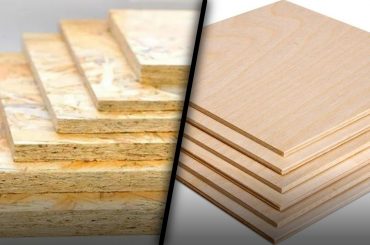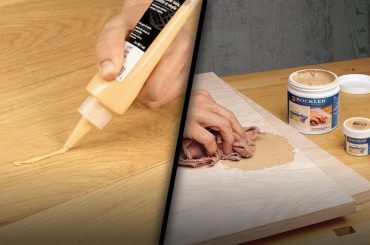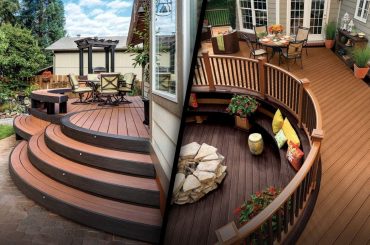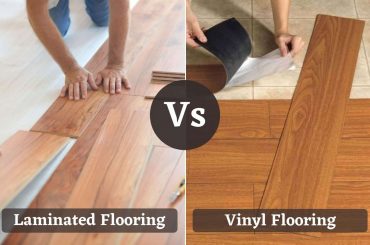Don’t know what wood finish to choose? You can make the right choice for your next project by understanding the differences, as explained by pros.
Woodwork is protected and made more beautiful by a finish coat. An excellent piece of woodworking can seem shoddy if it isn’t done right. To ensure a successful project, you must choose the right finish.
Even experienced DIYers can feel overwhelmed by the wide variety of finishes available. You’re in good hands with us!
For DIY projects, we asked woodworkers, painters, and furniture makers about the key differences between polyurethanes, lacquers, and varnishes.
What Is Polyurethane Wood Finish?
You’re absolutely right to think of “polyurethane” as a type of plastic. Polyurethane (also known as poly) is a liquified plastic resin that hardens after application. Stain/poly combos are available, as well as a variety of sheens.
In comparison to lacquers and varnishes, poly provides a thicker layer of finish. Tony Lara has been working with polyurethane for 30 years as the president and owner of Picazzo Painting.
It could be your hero if you live in a busy household or have high-traffic areas,” Lara explains. However, if it gets damaged, “repairing that thick, plastic-like layer is no walk in the park.” Luckily, the initial application is forgiving, making it one of the most popular choices for beginners.
A common mistake made by DIYers and professionals is not following directions. Nick O’Keefe, CEO of Oak City Coatings, says understanding the product is essential. Even the best intentions can be sunk by inadequate preparation and incorrect application methods.
Polymers have the following characteristics:
-
Best uses: Areas with high traffic and potential abuse.
-
Durability: Excellent.
-
Dry time: Medium (2 to 4 hours).
-
Ease of application: Simple.
-
Application methods: Wipe on, brush on, spray on.
-
Cost: Affordable ($10 to $25 per quart).
-
Safety and sustainability: Removes easily with water and has a low odor. There are more volatile organic compounds in oil-based products.

What Is Lacquer?
A fast-drying, clear finish that doesn’t require sanding between coats, unlike polyurethanes and varnishes. Additives in lacquer allow the new coat to blend into existing layers by slightly dissolving the previous layer. In this way, a solid, single surface is created.
Lacquer shows off the wood’s natural beauty, enhancing its grain patterns. According to Lara, lacquer makes wood’s natural beauty shine. You can choose between high-gloss and matte finishes.
The smooth and polished look of lacquer appeals to industry veteran and Newline Painting owner Phi Dang. In high-traffic areas, he says, thinner layers may not offer the durability needed because they are more susceptible to scratches.
The ease of application and fast drying time of spray-on lacquers make them popular among DIYers. As it dries so quickly, it is also suitable for areas with dust or pollen. You should be able to keep the air clean for a half hour.
-
Best uses: Detailed woodwork and fine furniture.
-
Durability: Durable.
-
Dry time: Quick (about 30 minutes, with some dries to the touch in as little as five minutes).
-
Ease of application: Sprays are easy to apply, brushes are more difficult.
-
Application methods: Spraying or brushing
-
Cost: Medium (20 cents per quart).
-
Safety and sustainability: VOCs are high in lacquer. Filters with a vapor-rated rating should be used when using a respirator.
What Is Varnish?
For outdoor furniture, varnish was unanimously chosen as the best finish. According to Dang, it is ideal for outdoor furniture and decks due to its UV protection.
According to Lara, DIYers should understand varnishes take time to dry. Rushing the process, he says, can result in “peeling, cracking, or even bubbles.”
-
Best uses: Items exposed to heat and humidity, such as outdoor furniture.
-
Durability: Excellent against outdoor conditions (especially spar varnish).
-
Dry time: Several hours (four to 24 hours between coats).
-
Ease of application: Medium. Applying requires multiple coats, but is relatively easy.
-
Application methods: Brushing or spraying. Other types of varnish are usually brushed on instead of sprayed on.
-
Cost: Expensive ($25 to $40 per quart).
-
Safety and sustainability: In terms of its VOCs and environmental impact, varnish falls between polymers and lacquers.
Lacquer vs. Polyurethane
Adhesion type and dry time are the two main differences.
-
Adhesion: Surfaces coated with polyurethane adhere to each other and to wood surfaces. A lacquer melts and bonds with previous coats of lacquer, first penetrating into the wood and then melting and bonding. It is for this reason that poly must be sanded between coats, whereas lacquer finishes do not require this step.
-
Dry time: Polymers based on water can dry within hours, whereas polymers based on oil can take up to a day. The drying time of lacquers is usually less than half an hour.
Both finishes are versatile. If you are going to have a lot of contact with your figurines, jewelry boxes, or any other item that will be frequently handled, lacquers are a great option. Floors, shelving, and items that are regularly walked on or used benefit from poly.
Varnish vs. Polyurethane
What is the main difference? Water and sunlight are more resistant to varnish. Temperature changes also cause it to expand and contract. Outdoor furniture is commonly varnished because of these characteristics.
The outdoor protection comes from varnish, while the heavy-duty protection comes from polyurethane, according to Lara.
Spar varnishes and urethanes are recommended for applications exposed to intense outdoor conditions. Spars refer to boat building finishes that are highly resistant to water, sun, and temperature. Because nautical wood is expected to be refinished regularly, they are less resistant to scuffs and scratches.





